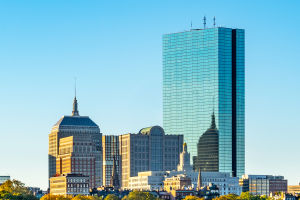Kenya, located in East Africa, has undergone significant changes in its urban architecture in recent years. Driven by rapid urbanization and the expansion of the middle class, Kenya's cities are witnessing a surging demand for modern and contemporary architecture.
This article will explore the characteristics of modern urban architecture in Kenya, the materials used, and the architects behind these designs.
Modern urban architecture in Kenya is characterized by its use of clean lines, minimalism, and functionality. The designs are often simple and geometric, which focus on practicality and efficiency. This is a departure from the ornate and intricate designs of traditional African architecture.
Another characteristic of modern urban architecture in Kenya is its use of sustainable materials and technologies. Many architects in Kenya use locally sourced materials such as stone, clay, and bamboo to reduce the carbon footprint of their buildings. They are also incorporating with sustainable technologies such as solar panels and rainwater harvesting systems to minimize energy consumption and promote environmental sustainability.
Concrete, one of the primary materials used in modern urban architecture in Kenya, is favored for its durability, versatility, and ability to withstand the harsh climate of Kenya. In addition, concrete is a cost-effective material, making it a popular choice for many architects.
In the realm of modern urban architecture in Kenya, various materials find their place, including glass, steel, and wood. Glass, coveted for its transparency, enables the infusion of natural light into buildings, fostering an atmosphere of openness and spaciousness. Steel, renowned for its robustness and stability, is frequently integrated into the structural framework, ensuring strength and durability. Wood, cherished for its inherent warmth and aesthetic appeal, is commonly employed for finishes and decorative embellishments, adding a touch of natural beauty to the architectural composition.
Several architects in Kenya are leading the way in modern urban architecture. David Adjaye, a British-Ghanaian architect, has designed several notable buildings in Kenya, including the new National Museum of Kenya in Nairobi. His designs often incorporate elements of traditional African architecture with a modern twist.
Another prominent architect in Kenya is Patrick Coulombel, a French architect who has worked extensively in Africa. Coulombel is known for using sustainable materials and his focus on community-driven design. He has designed several affordable housing projects in Kenya, including the Mavoko Housing Project in Nairobi.
A third architect making waves in Kenya's modern urban architecture scene is Francis Kere, a Burkina Faso-born architect who was the designer of the 2017 Serpentine Pavilion in London. Kere is known for using natural materials, such as clay and bamboo, and his focus on community engagement in the design process. He has designed several projects in Kenya, including the Mama Sarah Obama Legacy Campus in Kogelo.
Modern urban architecture in Kenya is characterized by its simplicity, functionality, and sustainability. Architects in Kenya are using locally sourced materials and sustainable technologies to create beautiful and environmentally friendly buildings. David Adjaye, Patrick Coulombel, and Francis Kere are just a few of the architects who are leading the way in modern urban architecture in Kenya. As Kenya continues to urbanize, it will be exciting to see how its architecture evolves and adapts to meet the needs of its growing population.


